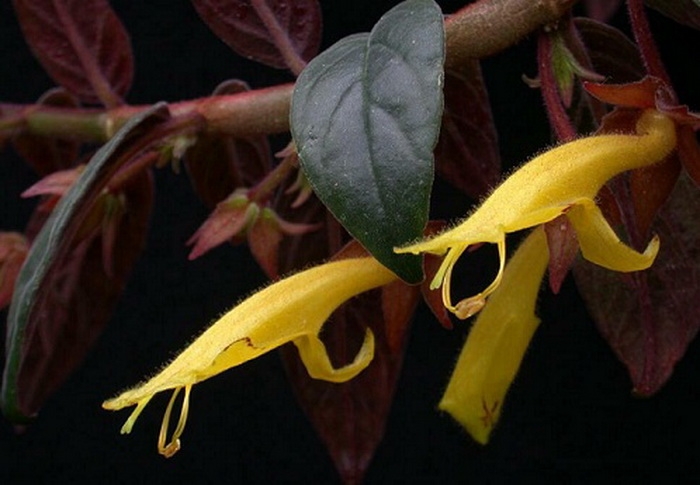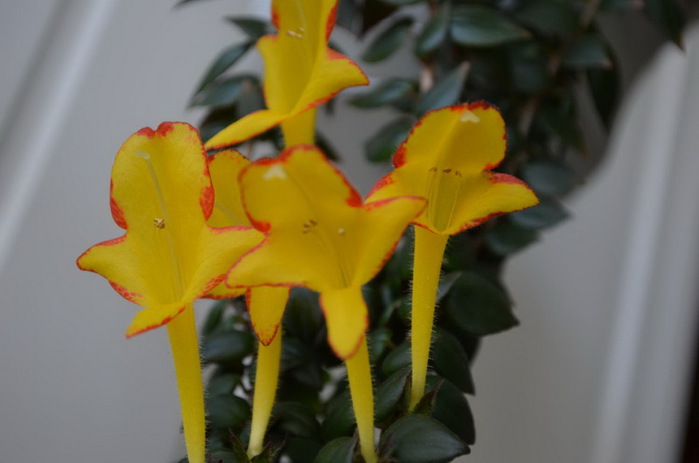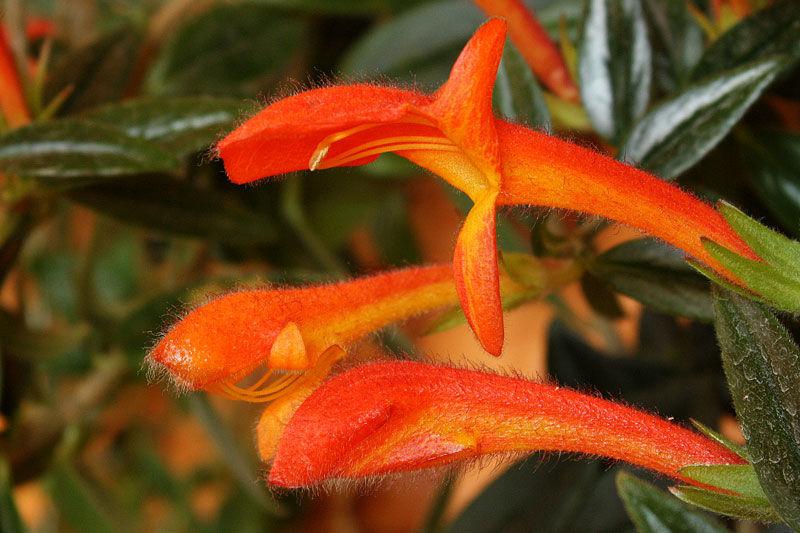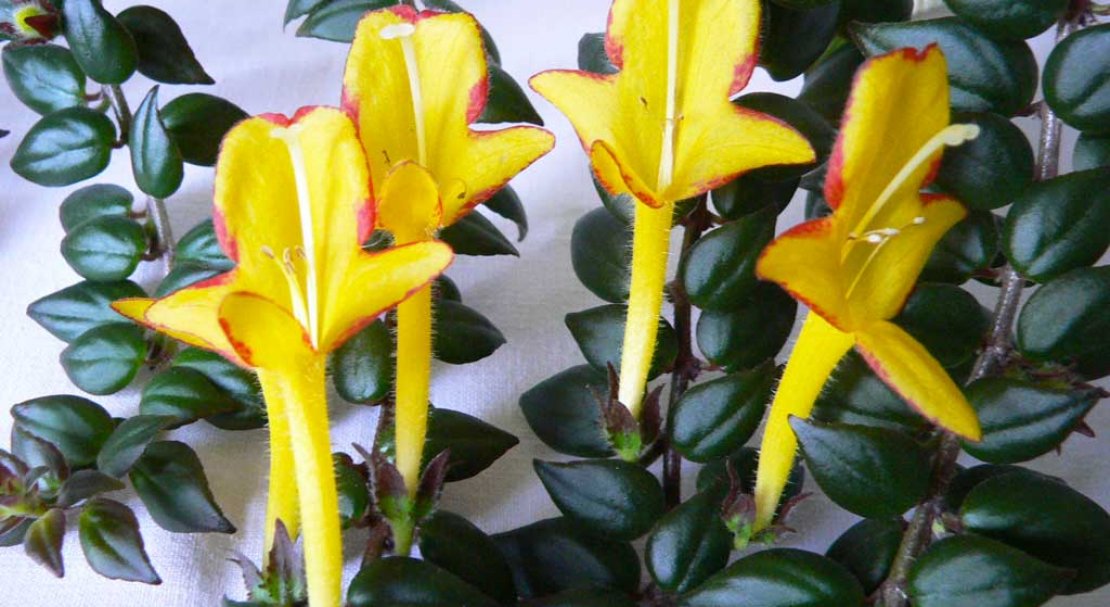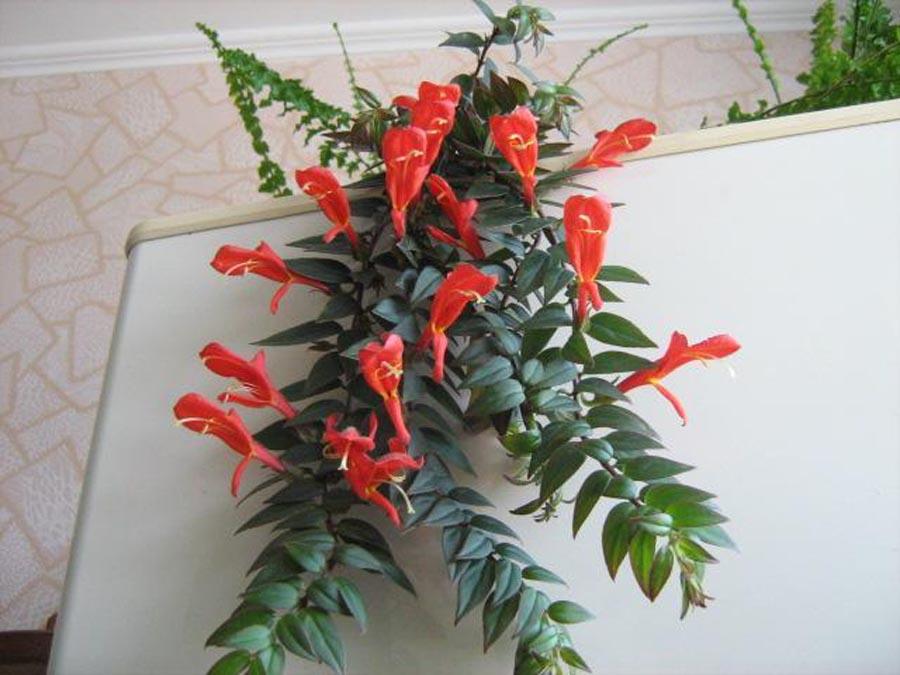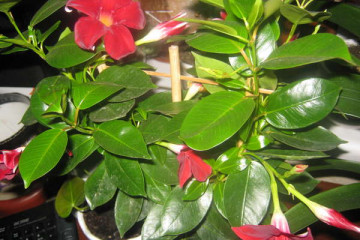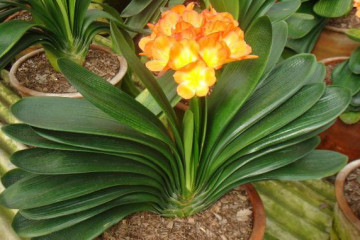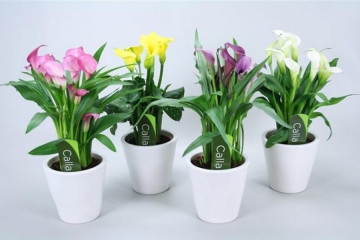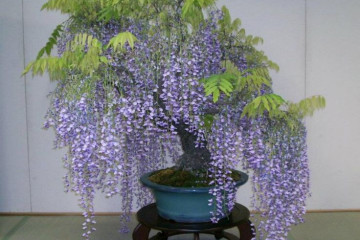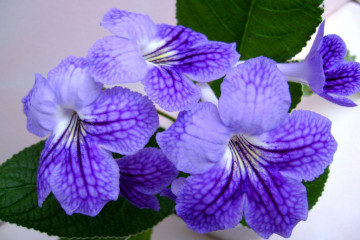Columney - home care and cultivation
Content:
Columney is a representative of the Gesneriev family, which has more than 190 plant species. It was brought from the tropical areas of the United States, where it grew on fallen trunks and trees.
Columney flower: home care
The plant blooms in winter or early spring, following the summer season in the Southern Hemisphere.
general description
Columnea is a flower that is a perennial representative of ampelous herbaceous plants from the Gesneriev family. The main distinguishing features are brightly colored flowers and drooping stems. Cascading vines can reach up to 10 cm, fragile to the touch, although they look impressive.
The leaves are pointed towards the top and are oval or heart-shaped with a glossy surface. Leaves can grow from 4 to 10 cm, flowers are formed from their base and are located closer to the middle of the stem. Flowers come in yellow, orange and pink shades.
Temperature control and lighting
It is a heat-loving and light-loving plant. Light is needed in large quantities and should be soft and diffused. You should not place the plant in open spaces outdoors, as the columnea negatively perceives direct sunlight and drafts.
The temperature should be kept between 24 ° C and 27 ° C. If the air is humid, you can go a little higher. In winter, the bush is kept cool at an average temperature of 17 ° C. This stimulates the productive emergence of new flower buds.
Column watering and air humidity
Columnea is a visitor from a tropical climate who loves humid air. If the leaves have become smooth, spraying is carried out, and when there are villi on them, it is better to do with water fog.
It is better to use water for irrigation at room temperature not lower than 20 ° С. Before watering, it must be filtered, because the columnea does not react well to lime and can die. The more massive the plant, the more water it uses. In summer, abundant watering is arranged, in winter - moderate.
Requirements for soil and fertilizers
The plant loves a substrate with a lot of nutrients. On sale in specialized stores there is a ready-made one with a suitable composition. It can also be mixed with charcoal, ash and moss particles.
In warm periods, feeding is done 1 time in 12-15 days. Reacts best to liquid formulations. During the flowering period, fertilizers are used for flowering plants. In cold seasons, feeding should be carried out less often - once every 4 weeks.
Propagation by cuttings
Reproduction through cuttings is a universal method for any time of the year. 7-10 cm with several leaves are cut from large branches and placed in settled water. Can be planted immediately and watered as needed.
Plant formation
The growth rate of the plant is colossal. In the first year, the growth of shoots will be up to 50 cm.During development, the stems become bare, often errors during care lead to this.
To stimulate future flowering, it is necessary to prune every year (when the flowers wither). Parts of the shoots are cut off, and some of them are rooted to obtain new columnea bushes.
Why does not bloom bloom
Columnea is a visitor from the tropics, so she is very sensitive to temperature changes in the room and the level of humidity. If the regime is not followed, it stops giving flowers, the leaves may wither and turn yellow, and if there is a lack of moisture, the plant may die.
It is also not worth overdoing it with watering, the roots may begin to rot due to stagnant moisture, and the plant will die.
Diseases and pests
Pests and diseases practically do not threaten this species, but it can be susceptible to the appearance of:
- aphids;
- scale insects;
- ticks;
- thrips.
If watering is too active, gray rot can develop on the shoots and at the roots. If the infected area is small, the shoots are cut off and transplanted with columnea, treating it with a fungicide. If most of the plant is affected, then healthy cuttings are cut, and the diseased flower is destroyed.
Difficulties in growing
Home care will not always be an easy task. If it is not possible to maintain a certain temperature regime and light in the room, problems may arise with growing a plant.
The consequences of mistakes made when caring for a plant
Improperly constructed column care can cause irreparable harm.
The main mistakes and their correction:
- the appearance of brown spots on the leaves means that too cold water is being used for watering. The optimum temperature for irrigation is 19-20 ° C;
- rot at the roots, the appearance of fungi - too intensive watering. The diseased parts of the plant are removed and transplanted into new soil;
- the appearance of downy mildew indicates an overly humid environment. Remove diseased parts of the plant, treat with fungicide and reduce the total moisture;
- leaves are stained and turn pale due to exposure to direct sunlight. Move the plant in a room with a softer light;
- the leaves fall off and dry up - a sign that the plant does not have enough moisture for life. More frequent spraying is carried out;
- the appearance of a cobweb between the leaves means a spider mite infestation. The plant is sprayed with a special insecticide. For prophylaxis, they do not allow excessive dryness and are often sprayed. Ticks don't like dry environments.
Is there a need for a colder period of rest
The dormant period is one of the most important stages in the plant cycle. After the end of flowering (in autumn), buds are laid for the next season. For this period, the temperature in the room is set at around 10-12 ° C. After 40-50 days, buds will begin to appear, after which the plant must be transferred to a warmer place with a temperature of 17-19 ° C.
Popular varieties
In Russia, the following flower varieties are most popular:
Columbus Carnival
It is a plant with shiny leaves of dark green shades.
Columnea Krakatoa
It got its name for its resemblance to a volcano. This is a type of ampelous Columnea, whose shoots are raised at the base. It has many thin leaves of dark green tones. The flowers are of medium size in shades of red and orange.
Columbus Sheydian
The species is native to Mexico, representing a spreading shrub with hanging branches. Long, elongated leaves with dense pubescence, on the outside the villi are white, on the inside they are reddish. Columnea Schiedeana has large flowers with a thick pile.The color is heterogeneous (there are burgundy blotches on the yellow massif).
Columbus Argut
Columnea species, brought from Panama, with shoots up to one and a half meters and massive vines with abundant pubescence. Leaves are shiny, tapering towards the end. The flowers form in groups from the leaf axils. The color of the flowers is red-orange with yellowish spots on the petals.
Columbus Shida
Fleshy plant with flexible stems and reddish pubescence. On the underside of the leaves are red villi. The vine reaches up to 1.5 m, and the size of the leaves is up to 10 cm. Flowers of yellow colors with brown blotches grow along the entire length.
If the planting is carried out correctly and properly cared for, every year it will delight with abundant flowering. The main thing is to observe the temperature regime, maintain humidity and clean old shoots.
